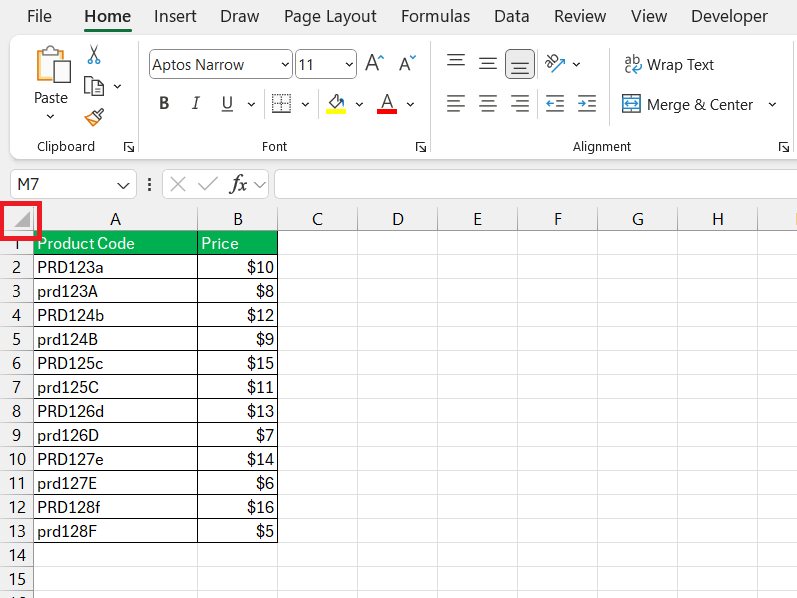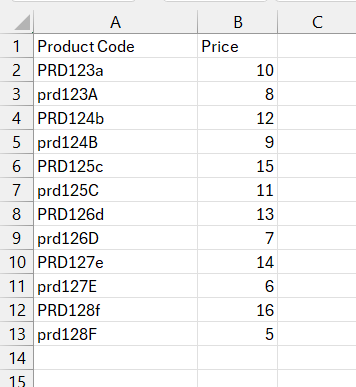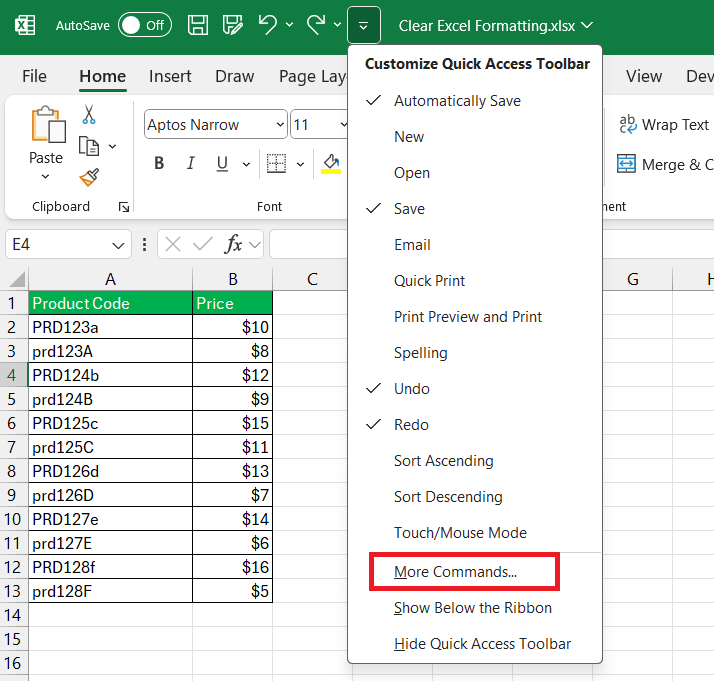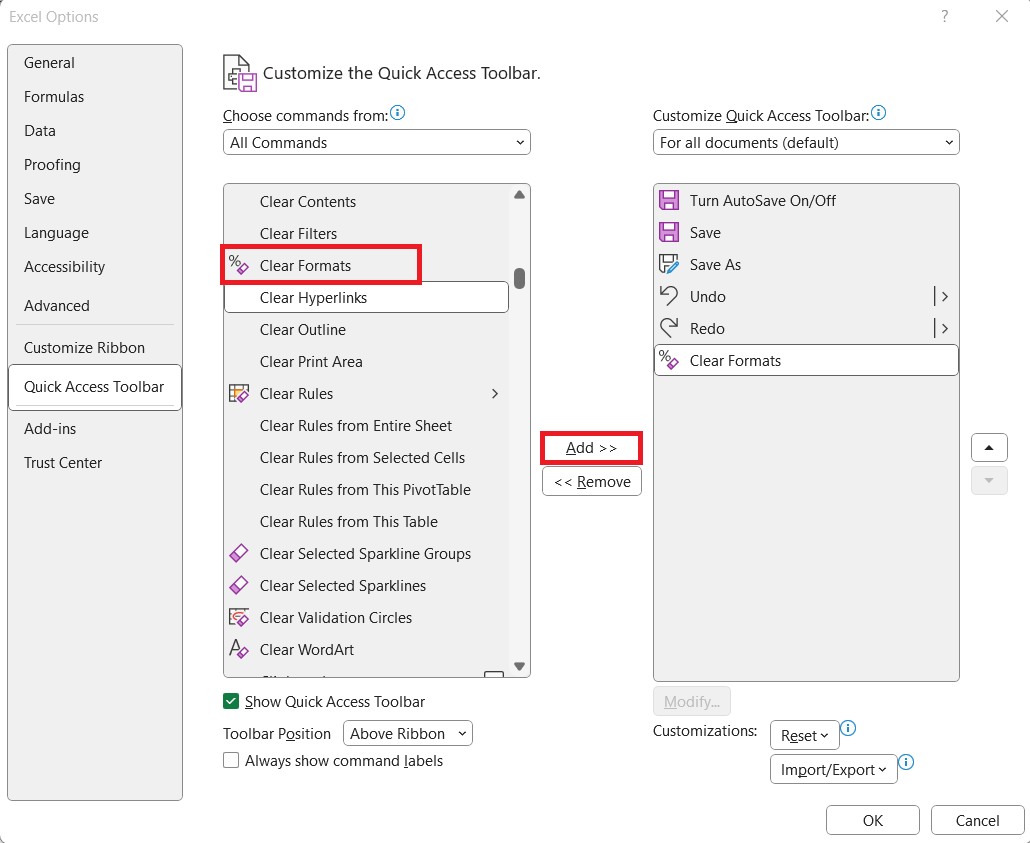Clearing cell formatting in Excel is a crucial skill for maintaining clean and consistent spreadsheets. Whether you’re starting fresh or need to remove unwanted styles, understanding how to clear formatting can streamline your workflow and improve data clarity. This article will guide you through the steps to efficiently clear Excel Formatting and ensure your spreadsheets are organized and easy to read. By mastering this technique, you’ll be able to focus on your data without the distraction of unnecessary formatting.
Key Takeaways:
- Clearing cell formatting is essential for maintaining a clean and consistent spreadsheet.
- Use the ‘Clear Formats’ feature to quickly clear Excel formatting from selected cells.
- The ‘Format Painter’ tool helps efficiently replicate desired formatting across multiple cells.
- Keyboard shortcuts like ‘Ctrl’ + ‘Shift’ + ‘Z’ can speed up the formatting removal process.
- Customize the Quick Access Toolbar to save time on frequently used commands, such as clearing formats.
Table of Contents
Introduction to Excel Formatting
Understanding the Basics of Excel Cell Formatting
Excel cell formatting might seem intimidating at first, but it’s pivotal for us to get a grip on this feature to make data presentation in Excel spreadsheets much more effective. What this refers to is the ability to change the appearance of text and cells in a spreadsheet, including the adjustment of fonts, sizes, number formats, borders, and cell shading.
Since clear communication often depends on the ease of data comprehension, mastering cell formatting is a fundamental skill.
The Importance of Maintaining Clear and Consistent Formatting
Maintaining clear and consistent formatting in Excel not only enhances the visual appeal but also contributes to accurate data interpretation. When we keep a uniform style, it significantly elevates the spreadsheet’s readability, making patterns, trends, and key insights instantly recognizable.
Think of formatting as the language of emphasis in Excel; it guides the viewer’s eye to the most important parts of the data. Consistency in formatting ensures that when we present our data to stakeholders or team members, they can quickly grasp the meaning without confusion or misinterpretation caused by inconsistent styling.
Step-by-Step Guide to Clearing Formats in Excel
Selecting the Cells with Unwanted Formatting
When we’re facing a spreadsheet filled with a mix of desired and unwanted formatting, the first step to clean it up is to carefully select the cells from which we want the formatting removed. It’s a very straightforward process; we can click and drag our cursor over the cells, use the row or column headers to select larger sections, or even select the entire worksheet with the ‘Select All’ button.
Precision in selection is key because this process ensures that we are only stripping away the formatting from places where it’s not needed while preserving the necessary styling that helps interpret the data effectively.
Utilizing the ‘Clear All’ Feature for Instant Results
To remove formatting quickly and efficiently, Excel’s ‘Clear All’ feature is immensely useful, especially when dealing with extensive datasets. Accessible from the ‘Home’ tab under the ‘Editing’ group, ‘Clear Formats’ instantly wipes away all the formatting from the selected cells, reverting them to the default Excel format.
This includes all font stylings, cell fill colors, borders, and number formats. As we select this option, the changes take effect immediately, leaving us with a clean slate to apply fresh, consistent formatting as required.
It’s a powerful tool that can vastly speed up the process of data cleanup and preparation.
Advanced Techniques for Excel Formatting Cleanup
How to Use Format Painter to Streamline Your Workflow
The ‘Format Painter’ is a powerful yet often underutilized tool in Excel that we can use to streamline our workflow significantly. This tool allows us to copy the formatting from one cell or range of cells and apply it to another with just a few clicks—a real timesaver.
To utilize it, first we select the cell with the desired formatting, then click the ‘Format Painter’ button found on the ‘Home’ tab within the ‘Clipboard’ group.
The cursor changes to a paintbrush icon, indicating that the tool is active. Now, when we click on or drag it over other cells, they inherit the copied formatting instantly. This feature shines when we have complex or specific formats that we want to replicate across multiple cells without manually adjusting each one.
Keyboard Shortcuts to Speed Up Formatting Removal
I find keyboard shortcuts are a game-changer for efficiency, particularly when working with large datasets in Excel. To clear formatting swiftly, we can use the trusty ‘Ctrl’ + ‘Shift’ + ‘Z’. This little shortcut is incredibly efficient and works in all versions of Excel, saving lots of time compared with manual menu navigation.
Alternatively, for a complete formatting removal from the entire sheet, we can use ‘Alt’ + ‘H’ + ‘E’ + ‘F’. By committing these shortcuts to memory, we ensure a faster and more productive workflow, enabling us to focus more on analyzing our data rather than on tedious formatting adjustments.
Special Tips and Tricks
Saving Time with Customizable Quick Access Toolbars
We can save precious time by customizing the Quick Access Toolbar in Excel. This feature lets us add commands that are frequently used, like ‘Clear Formats’, to a toolbar that’s always visible, regardless of which ribbon tab we are on.
To personalize it, we follow these quick steps: Click on the ‘Customize Quick Access Toolbar’ button and select More Commands.
Then in the options menu, we choose ‘All Commands’ and find ‘Clear Formats’. A simple click on ‘Add >>’ moves it into our toolbar for one-click access.
The Clear Format button will now appear on the Quick Access Toolbar.
Positioning this along with other often-used functions streamlines our workflow, reducing the clicks and time spent on formatting cleanup.
Preventing Common Mistakes When Cleaning Data in Excel
In my experience, common mistakes can creep in when cleaning data in Excel. It is crucial to prevent accidental loss of essential formatting or data. Before beginning the cleanup process, ensure you have a copy of your dataset with the original formatting intact. It serves as a backup and a reference point.
Be cautious not to remove cell formats that contain conditional formatting or data validation rules unless intended. These are often crucial elements that govern the integrity and functionality of your spreadsheet. The undo feature (‘Ctrl’ + ‘Z’) is our best friend here to quickly rectify any immediate errors that occur during the cleaning process.
FAQ: Mastering Excel Formatting
How do I clear formatting simultaneously in Excel?
To clear formatting from all cells simultaneously in Excel, press ‘Ctrl’ + ‘A’ to select the entire worksheet, then go to the ‘Home’ tab, click on ‘Clear’ in the ‘Editing’ group, and choose ‘Clear Formats’. This will remove the formatting from every selected cell at once.
How do I clear everything in Excel?
To clear everything in Excel, including all data, formatting, and comments, select the cells or press ‘Ctrl’ + ‘A’ for the entire sheet, then navigate to the ‘Home’ tab, click the ‘Clear’ dropdown in the ‘Editing’ group, and select ‘Clear All’.
How can I quickly clear formatting from multiple cells at once?
To clear formatting from multiple cells at once, select the cells you wish to clear. Then press the keyboard shortcut ‘Ctrl’ + ‘Space’ to select an entire column or ‘Shift’ + ‘Space’ to select a row. After that, use ‘Ctrl’ + ‘Shift’ + ‘Z’ to remove the formatting promptly.
Can I remove just specific parts of cell formatting, such as font color or borders?
Yes, to remove specific parts of cell formatting, like font color or borders, right-click the cell, choose ‘Format Cells’, and then select and clear the specific formatting elements you want to remove under the ‘Font’, ‘Border’, or ‘Fill’ tabs.
What is the shortcut key for clear cell formatting in Excel?
The shortcut key for clearing cell formatting in Excel is ‘Ctrl’ + ‘Shift’ + ‘Z’. This removes all formatting from the selected cells, reverting them to the default style. For more targeted formatting removal, use ‘Alt’ + ‘H’ + ‘E’ + ‘F’.
John Michaloudis is a former accountant and finance analyst at General Electric, a Microsoft MVP since 2020, an Amazon #1 bestselling author of 4 Microsoft Excel books and teacher of Microsoft Excel & Office over at his flagship MyExcelOnline Academy Online Course.














